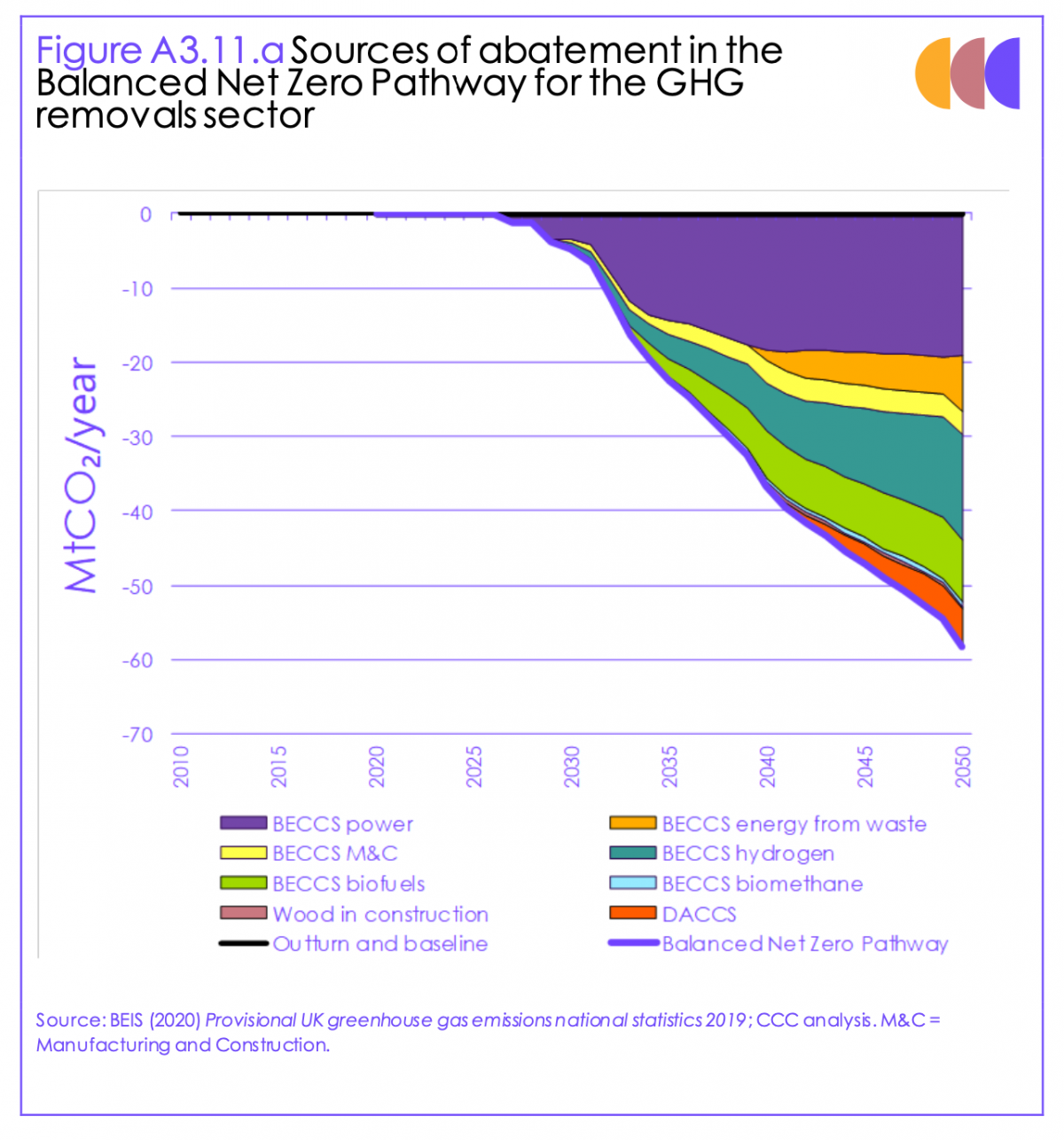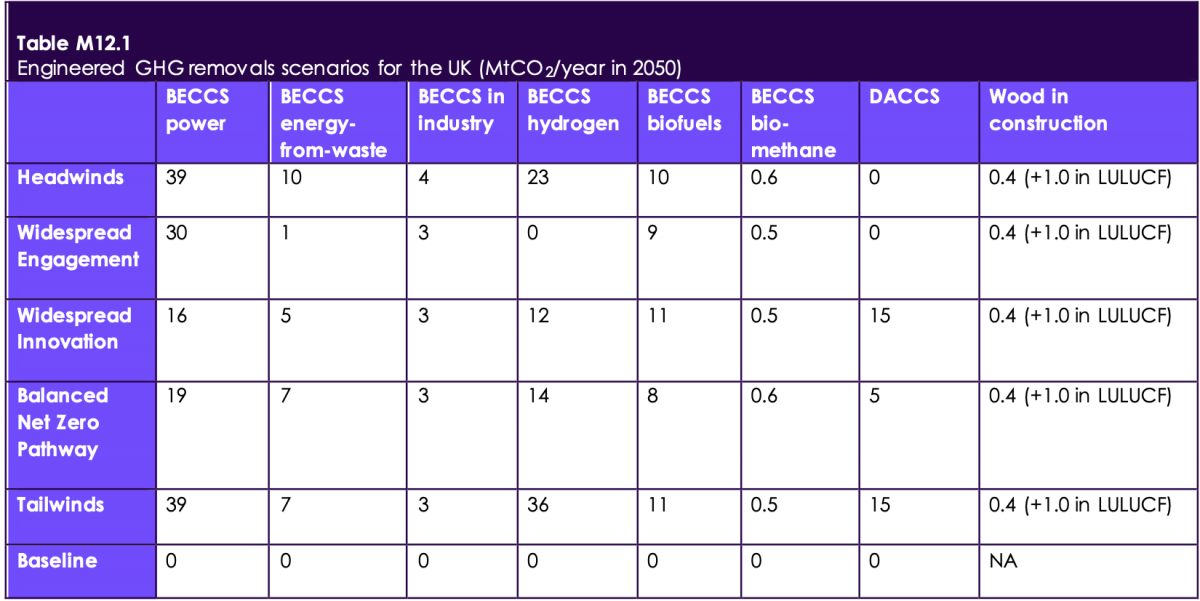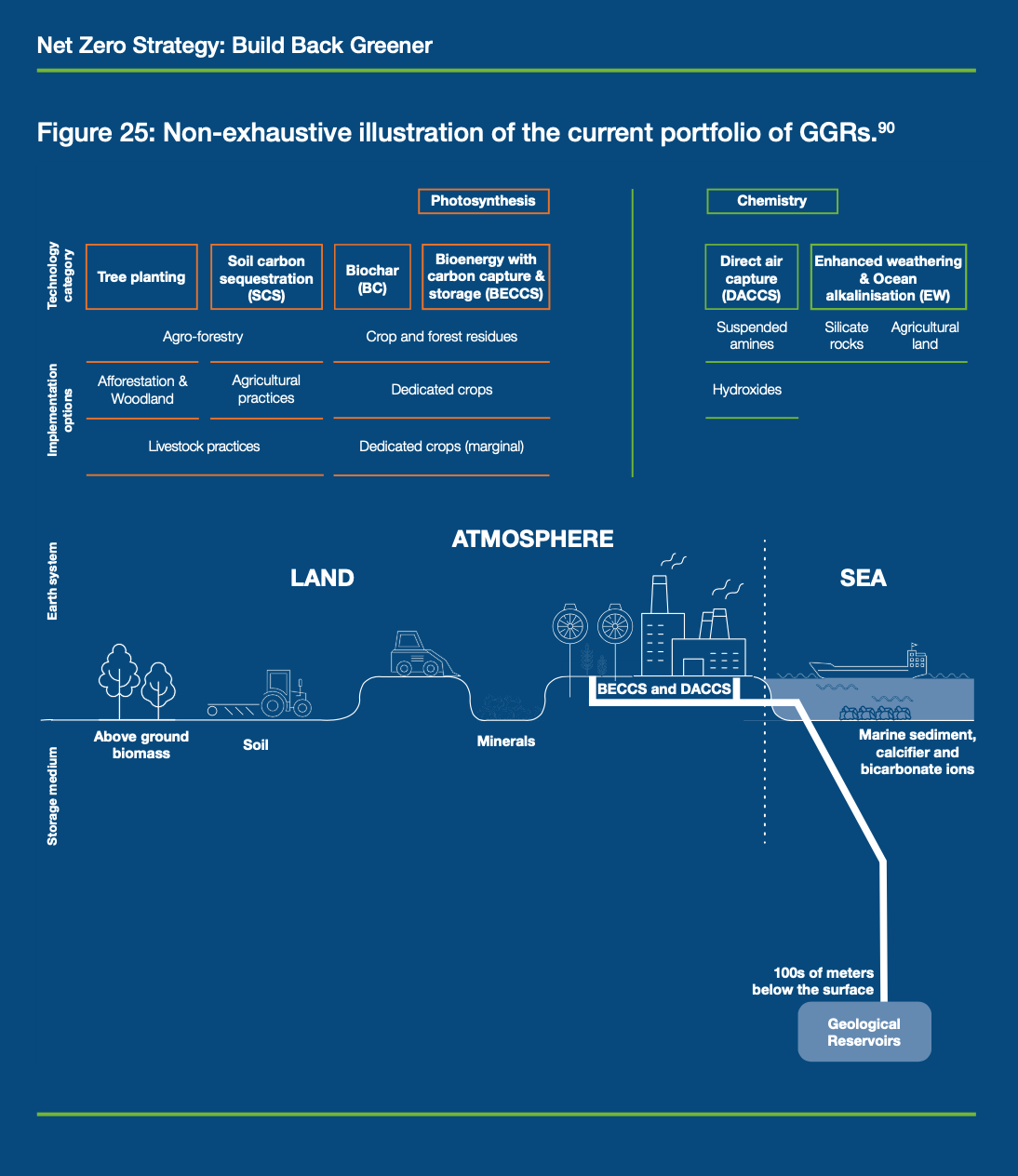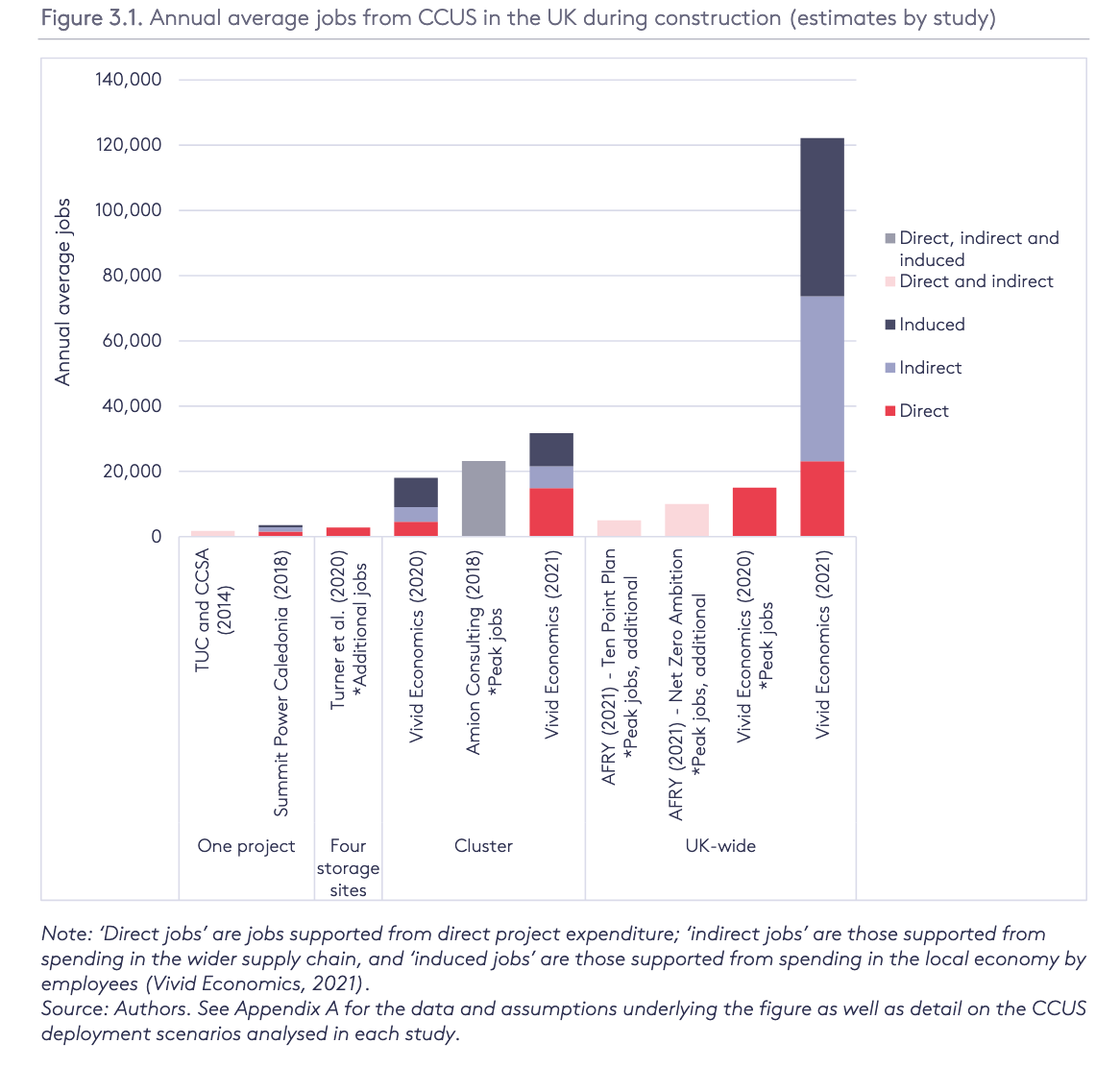UK makes carbon capture central pillar of net-zero drive
Come 2030, the UK wants to extract some five million tonnes of CO2 from the atmosphere, using all available greenhouse gas removal methods, from peatland management to direct air capture, and bets heavily on carbon sequestration under the sea floor.
Both engineered and land-based solutions will be part of the effort, according to the government’s new October 2021 net-zero strategy, which follows a decision in May to invest some 100 million British pounds in pilot schemes that are testing the viability of a variety of greenhouse gas removal methods.
By 2035, the UK wants to achieve a 78 percent emissions reduction from 1990 levels, and in 2050 the country wants to reach a point where greenhouse gas emissions and removals are balanced (net-zero). In its most recent assessment, the Climate Change Committee, which advises the government, estimates the UK will need to be removing between 28 and 35 million tonnes of CO2 per year via natural sinks and between 44 and 112 million tonnes of C02 per year via engineered removals in order to achieve net zero.
But while there are concrete promises of CO2 removal and job creation via two large carbon capture use and storage (CCUS) projects underway in the North of the country, the role of land-based solutions is less clear. Both researchers and opposition politicians warn that handing the carbon removal business to the same oil and gas giants who caused and benefited from creating the climate crisis in the first place will neither bring about a fast change away from fossil energy sources nor secure public support.
“The narrative has changed from ‘we will only deploy carbon capture, usage and storage technology (CCUS) subject to costs coming down’ to ‘we need to deploy CCUS in order to bring costs down,” Esin Serin, policy analyst at the London School of Economics’ Grantham Research Institute on Climate Change and the Environment, told Clean Energy Wire.
While there is a “toxic debate” in Germany over the pros and cons of capturing and storing carbon emissions especially from industrial processes, there is broad consensus over the need for greenhouse gas removal technology in the UK. All UK parties agree that greenhouse gas removal should be intended for balancing residual emissions from sectors that are difficult to decarbonise, but not used at the expense of ambitious emissions reduction.
According to David Reiner, political scientist at the University of Cambridge, more division may arise when it comes to using carbon capture beyond sectors that are hardest to decarbonise: for example, the idea of heating homes with hydrogen made from natural gas using carbon capture is likely to be more controversial than using that hydrogen in industry.
Like in Germany, some environmental groups are deeply sceptical about the development of greenhouse gas removal technology. They see it as a strategy for enabling business as usual and preventing more radical structural changes to our society and economy. They argue that technologies untested at large scale - or even in their infancy in some cases -, are being relied on to compensate for emissions cuts we should be making now.
“I’m concerned that CCUS can in effect allow non-CCUS energy generation to go ahead on a wing and a prayer for the foreseeable future. That’s an extremely dangerous situation,” spokesperson for the Greens Climate Activist Network (GreensCAN), Rupert Read, told Clean Energy Wire. “Let’s engage in carbon capture by renewing sea grass meadows, by stopping bottom-trawling and over-fishing and whaling, and by protecting kelp forests.” Currently none of these strategies are being prioritised by the UK government.
Remove up to 81 million tonnes CO2 in 2050 to reach net-zero
The Climate Change Committee advising the government has stated that carbon capture, use and storage “is a necessity, not an option”. This is a position shared by the IPCC as well as the International Energy Agency (IEA) which has concluded that reaching net-zero globally will be virtually impossible without CCUS.
In a report published at the end of 2020, the Climate Change Committee proposed a ‘balanced pathway’ to net zero in which 57 million tonnes of CO2 (MtCO2) will be taken out of the atmosphere per year by engineered removals in 2050. The government, in its net zero strategy, puts this figure slightly higher at between 75 and 81 MtCO2. It says this will constitute 45-80 percent of all captured emissions across the UK economy.
CCS, CCUS, BECCS, DACCS - explaining carbon removal jargon
"Land-based" solutions:
Afforestation: bind/store carbon in trees (!) permanence
Carbon farming: Humus build up in arable soils to achieve soil carbon sequestration (!) saturation
BECCS – Bioenergy with carbon capture and storage: Grow biomass for use in bioenergy plants with carbon capture and storage technology (!) land use competition
Biochar: Appliance of a kind of rich-in carbon coal made from converting biomass on arable soils (!) little tested
Technology / Chemistry solutions:
CCS – Carbon capture and storage: CO2 is captured at industry facilities point sources and then permanently stored e.g. in saline aquifers (sea floor), by pumping it into basaltic rocks or otherwise stored in an underground geological formation(!) infrastructure, costs, permanence
CCU – Carbon capture and use (or usage or utilisation): Using the captured CO2 as a raw material or feed-stock for other processes, in biochemistry, to create fuels, plastics, other value-added commodities (!) no permanent removal of CO2 from atmosphere
DACCS - Direct air capture and carbon storage: Filtering CO2 from the air (not at a point source) and store it permantly e.g. in saline aquifers, rock formations (!) industry in its infancy, costs
CCUS – Carbon capture utilisation and storage: Umbrella term for projects and infrastructure that are doing carbon capture and use or carbon capture and storage or both
Enhanced weathering: small parts of minerals are distributed on soils to help bind CO2 from the air and sequester it in the ground (!) little tested
Jon Gibbins, director of the UK Carbon Capture and Storage Research Centre (UKCCSRC), which connects CCUS researchers and research users, points out that “If you look at all the IPCC predictions for achieving 1.5 degrees, they all go to net negative in the latter part of the century. Net zero is not the end point. Following the science, the probability is that, globally, we will have to take CO2 out of the atmosphere as soon as we reach net zero. That CO2 won’t be removed fast enough by natural systems to avoid dangerous climate change.” This alone, he argues, makes carbon removal and storage technology a necessity.
“Significant deployment” of BECCS and DACCS expected by 2030
Land use changes – such as afforestation, peatland restoration and the growing of energy crops – are important but not deemed sufficient for making the emissions reductions at the speed required. What’s more, “there’s no way you can rely on keeping a forest in place for 10,000 years particularly under climate change,” says Jon Gibbins.
In the UK, afforestation of around 30,000 hectares per year (increasing woodland cover from the current 13% of UK land area to 17%), combined with an increase in active woodland management, peatland restoration (e.g. to 55% of peatland area restored compared to 25% today), and the cultivation of energy crops (e.g. to 700,000 hectares by 2050 from very low levels today) increases the net land use sink to 22 MtCO2e per year by 2050. Without, these changes to land use would be a significant emissions source rather than a small sink.
The Climate Change Committee report proposes BECCS (bioenergy with carbon capture and storage), DACCS (direct air carbon capture and storage) and the utilisation of wood in construction as the three most viable options for carbon removal. BECCS involves growing biomass (which removes carbon from the atmosphere), burning it for energy generation and capturing the carbon during combustion resulting in negative carbon emissions.
The government has taken on this recommendation in its net zero strategy stating that ‘by 2030 we envisage significant deployment of mature BECCS technologies and commercial scale deployment of DACCS’ and by 2050 ‘we will see the scale up of DACCS and BECCS with gasification technologies’. This of course depends, amongst other factors, on growing the requisite indigenous biomass (critical to bioenergy Carbon Capture and Storage). The government is currently consulting on a strategy for biomass which will be published next year.
Neither BECCS nor DACCS are currently available for use at the scale and cost required. DACCS technology is in its infancy; BECCS is at a more advanced stage of development.
Too much uncertainty on enhanced weathering and biochar
Jon Gibbins is confident that removals using BECCS, DACCS, biofuels, biogas and biomethane generation with CCS can be made available at scale over the next few years but he’s less sure about the scope for high-temperature gasification of biomass to make hydrogen; in fact, he says this may be technically impossible.
Other removal solutions, such as enhanced weathering, carbon-negative cements, ocean carbon sequestration and biochar have not been included in the government’s up-to-date modelling ‘given the underlying uncertainty and need for further development’, according to the net zero strategy document.
Enhanced weathering, the process by which crushed rocks spread across land remove CO2 from the atmosphere, is considered to be too under-developed for consideration at this stage.
Biochar, which entails treating biomass in a way that enables it to store bio-carbon when mixed with soil, is at a more advanced stage of development but puts further pressure on biomass resources and creates competition with BECCS.
Use carbon removal tech to “revitalise” the UK’s industrial heartlands
With only limited potential seen in land-based carbon removal and the added benefit of creating a large scale industry including thousands of jobs, CCUS projects are thus the top priority technology for the British government.
Prime Minister Boris Johnson’s Ten Point Plan for the climate, published in November 2020, listed carbon capture as one of the ten key policy goals of the government’s climate strategy and promised that the carbon capture, usage and storage industry would ‘revitalise the birthplaces of the first Industrial Revolution.’
In October 2021, the UK government selected two industrial carbon capture, transport and storage projects to be recipients of one billion British pounds state funding and support. These two projects – one based between Teesside and the Humber, and the other between the North-West of England and North Wales – are intended to be up and running by the mid-2020s (followed by two further projects intended to be in operation by 2027).
The developers of the East Coast and North-West Coast projects have had to prove they each have a viable transport and storage plan in place as well as at least two potential carbon capture projects. In the case of the Teesside and Humber industrial cluster, the plan is for CO2 to be stored in an aquifer in the Southern North Sea, via a 145 km pipeline from Teesside and an 85 km pipeline from the Humber. A wide range of CO2 sources are envisaged, potentially including natural gas power plants, blue hydrogen, energy-intensive industries and energy-from-waste plants.
In the North-West, the plans is for CO2 to be captured from existing industrial sites near Ince and the Stanlow refinery, and from a new low-carbon hydrogen plant at Stanlow. CO2 will be transported via an onshore network and a 30 km offshore pipeline with plans to use depleted hydrocarbon reservoirs in Liverpool Bay for permanent CO2 storage.
These CCS projects promise to create new jobs and protect existing jobs in the UK’s industrial regions. This overlaps with the government’s much talked about “levelling up” agenda which promises investment in areas of Britain left behind over the last forty years.
Investor confidence shaken by repeated govt failures to follow through on CCUS
Esin Serin told Clean Energy Wire that “CCUS offers a real opportunity for sustainable growth.” Investor confidence has been shaken by repeated failures by government to follow through on CCUS initiatives in the past. Now is the time, she says, for the government to show a long-term commitment to invest in CCUS and Britain’s capabilities in this area: estimates suggest up to 31,000 jobs could be created by 2030 primarily from construction but greater economic opportunities will be available in the export market if the government acts now. Although the UK is behind countries including Germany in terms of its current and potential future capacity as a producer of CCUS technologies, a report commissioned by the government suggests that CCUS as an export industry could create almost 50,000 direct jobs for the UK by 2050.
CCUS technologies also promise to protect existing jobs in energy-intensive industries, according to the Grantham Institute’s report. Estimates of job retention in the UK through CCUS vary; examples include: between 35 and 70 percent of existing manufacturing jobs supported and safeguarded in the Tees Valley; 60 percent of direct jobs retained in the iron and steel industry by 2060 in the East Coast region; and up to 53,000 jobs protected by 2030 in the UK’s refineries, steel and cement industries, and parts of the chemicals sector. Esin Serin and her colleagues view CCUS as a ‘bridge’ technology that will address industrial emissions while we work to reduce the costs of fully renewable solutions.
The companies behind the development of the newly selected CCUS industrial clusters – including BP, Eni, Equinor, Shell, Total and Cadent – are oil and gas companies, well placed to capitalise on this emerging market. These companies are interested in CCUS because it also enables the development of other markets they hope to drive forward and gain from, in particular blue hydrogen made from natural gas using carbon capture.
“The oil and gas companies who are doing the transport and storage are particularly interested in developing a new market where they sell people hydrogen instead of natural gas,” Jon Gibbons points out. Hydrogen production enables the continued use of fossil fuels when the carbon is removed via CCUS.
Public perception tainted by strong involvement of oil and gas companies
The prominent role being played by oil and gas companies in developing CCUS may not help public perceptions of the technology. As David Reiner puts it: “There are concerns over beneficiaries of the development being large oil and gas companies and that shifting to hydrogen would allow gas production to continue on its merry way. From this perspective, vested interests are seen to be capturing the process and preserving their role in the energy sector with profits going into the same pockets as before.”
Participants in a recent study from July 2021 expressed the view that carbon capture and storage, if it is deployed, should be managed by ‘ethical companies with a proven record of delivery on similar projects’. Moreover, there is a further debate to be had over who should manage the transport and storage of the sequestered carbon: should such a responsibility be given to private companies rather than state utilities?
David Reiner believes more public consultation is called for if CCUS is going to be rolled out at scale. Public familiarity with CCUS is currently very low. The July 2021 study found that over half of the population (54%) had never heard of CCUS and only 23 percent said they know at least a little about it. Among the 23 percent who reported knowing a little about carbon removal, 62 percent said they support carbon capture and storage, six percent were opposed and 31 percent were neutral.
Participants were concerned about safety of transport and storage, resistant to having CCS technology installed in their local area, and in favour of natural rather than technological greenhouse gas removal solutions.
“Capturing carbon as a long-term solution is ethically problematic”
Jon Gibbins is optimistic that the public can be won round: “We’re creating lots of jobs and we’re storing the carbon offshore – and CCUS is essential to get to net zero.” But the lessons of hydraulic fracturing (fracking) and onshore wind suggest that public support is critical to the deployment of new energy technologies. “Public communications should reflect both risks and benefits but could help people appreciate that storage of CO2 beneath the seabed through engineered removals is more secure and permanent than storing CO2 in trees or natural sinks,” says David Reiner.
Esin Serin is in favour of carbon capture technology because it offers a way to protect industry and jobs in the short term and a path to net negative emissions after 2050. However, she believes that relying on capturing carbon as a long-term solution is ethically problematic: “If you bury carbon, it needs to be stored, managed and monitored. The people currently deploying the technology will be gone and some other future generation will have to inherit the burden.” Research is being done into how we could use rather than store carbon, but as yet there are no immediate solutions at the necessary scale that avoid sequestering it underground.








